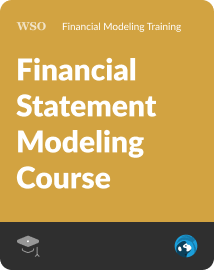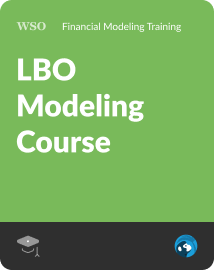Emerging Markets
An economy that is developing and experiencing strong economic growth is called an emerging economy.
What are Emerging Markets?
The economies whose characteristics align with the developed nations and are experiencing considerable growth are termed the ‘Emerging Markets’.
A beginner would ask - Why some nations are emerging markets while others are termed as the developed ones?
Several factors have contributed to the transition of emerging markets into developed ones. You can probably imagine it in a cycle. 3000+ years ago, the Harappan civilization, existing near the Indus Valley river, would have been considered a developed nation.
The great Roman empire that existed roughly 1000+ years ago would have been considered a developed nation, while the others, such as the Han Dynasty of China and the Parthian Empire in ancient Persia, were emerging nations.
These emerging dynasties expanded trade over the seven seas to increase their kingdom's wealth, built boats for the people and the soldiers, and built machines to help with agriculture.
What emerging markets are doing today is quite similar to what those dynasties did thousands of years ago.
Considering the importance of how influential these markets can become in the time to come, it becomes quite essential to study their micro & macro-economic factors.
Key Takeaways
- An economy that is developing and experiencing strong economic growth is called an emerging economy.
- High per capita income, liquid financial markets, and foreign direct investments are some of the signs of the emerging market economy.
- India, Russia, China, Brazil, and South Africa are the five major emerging economies of the world.
- These economies have volatile markets yet high investment potential due to the exponential economic growth pioneered by their people.
- With its investment potential and growth comes a great deal of risk - these nations may ‘sometimes’ undergo turmoil due to regulatory and political instability.
Understanding an Emerging Market Economy
An emerging market economy is one that is in its ‘developing’ phase and experiencing strong economic growth but has yet to transition into its ‘developed’ phase.
Such an economy shows a developed nation's characteristics, such as high per capita income, liquid equity and debt markets, considerable foreign direct investment, and a strong regulatory system.
Once a nation shows the traits of a strong emerging market, it slowly attracts the attention of other developed nations. For example, India has been all over the news in recent times due to its growth as a ‘perfect’ emerging market.
As per one of the independent studies by Invesco, India has surpassed China to become the most attractive emerging market for investment in 2023.
This means more US and UK-based companies are setting up operations in India due to political stability, technically adept demographics, and strong regulation. With more companies coming to India, the trade volume and foreign direct investment are directly increased.
Note
Some of the other notable emerging market economies are Mexico, Russia, Pakistan, Argentina, Indonesia, Egypt, Turkey, South Korea etc.
In a nutshell, an emerging market economy is one that previously had low income but is slowly transitioning to a modern industrial era, offering a higher standard of living and income to the people.
Characteristics of Emerging Markets
All the emerging markets have similar characteristics below.
Volatile market
Some of the markets could be extremely volatile due to political instability. One such recent example is Venezuela, which suffered economic collapse due to political instability.
Any political instability indirectly affects the performance of the market by making them illiquid and devoid of foreign direct investments.
High investment potential
If good political stability exists with a regulatory system in place, such markets have high investment potential for the ‘developed’ nations. There could be several reasons for huge faith in those emerging economies:
- Industrialization
- Internet/smartphone/technology adoption
- Reservoir of natural resources
Some emerging economies can also offer incentives to foreign companies to set up industrial plants or make capital investments. This makes it a likely investment platform for developed nations to diversify their portfolio.
Exponential economic growth rate
The governments of these economies are always looking for projects that might spur the next growth phase. For example, today, India is leading on all fronts in improving its relationships with developed nations for bilateral trade agreements.
Primarily an agricultural nation, India exports as many grains, spices, and other agricultural products to the entire nation as it is preserving its 1.4 billion population.
This has, in turn, helped India to receive FDI and technology that has further boosted its agricultural prowess and taken industrialization to the next phase.
Growing per capita income
With growing industrialization, an emerging economy offers more employment opportunities for its people. This, in turn, helps them improve their living standards and dependence on agricultural activities.
Industrialization and manufacturing activities directly improve a country's GDP, ultimately increasing the nation's per capita income.
Risks of Emerging Markets
Along with the immense potential, there are a lot of risks associated with emerging markets.
Some nations might face political instability, their financial markets might be illiquid, and the currency might face high volatility.
In most emerging markets, large companies are legacy businesses that are privately owned, making foreign investment even more difficult.
The larger companies might be sector-specific in businesses, even mainly involved in agricultural and allied activities.
There might be gaps in the regulations and the accounting practices of such companies, which might make it an unattractive prospect for foreign investors.
If we look from the operations perspective, then these markets pose two threats - infrastructure challenges and bribery. In some nations, there might be inadequate transportation services and communication, making it difficult for foreign companies to set up their base.
It is also possible that the corruption level in some of these emerging nations is high, leading to additional operational challenges for most businesses.
Classification of Emerging Market Economies
The emerging market nations are typically classified based on a combination of financial and economic factors. Some of the common factors considered include the following.
Economic indicators
There are several economic indicators for categorizing the growth of emerging nation economies, such as:
- Gross domestic product (GDP): A country's GDP size and growth rate are often used to understand its development potential. Even though developing countries have low GDPs compared to their developed counterparts, their growth rates might be exorbitantly high.
- Income level: The developing countries can also be classified based on per capita Income. Nations with lower per capita but growing exponentially fall under the category of emerging nations.
Market Size and Capitalization
Market capitalization and market size are important factors regarding a country's financial sector. If the size of the country’s financial market is small and illiquid compared to the developed ones, it may fall under the category of developing nations.
Such nations have fewer listed companies and lower trading volumes.
Infrastructure and Institutional Development
- Infrastructure: Well-developed nations have exceptional infrastructure, including transportation and communications. As compared to it, emerging nations might need more infrastructure in such infrastructure.
- Institutional development: The strength of the regulatory and legal framework is an important factor in distinguishing emerging and developed nations. An emerging nation is still developing institutions and may lack the stability to operate independently.
Political instability
Political stability and good governance also play a crucial role in classifying emerging nations. A history of political stability and transparency in law and order can impact investors' confidence in those markets.
Social and Human Development Indicators
- Education and Health: A nation's literacy rate and life expectancy can also be considered for classifying into developing and developed nations. A country with improvements in human development is often considered to be transitioning from an emerging market to a developed one.
- Poverty level: If an emerging nation is experiencing a reduction in the poverty levels and improvement in its people's standard of living, then it is an indicator of progress.
The Five Major Emerging Economies
The five major emerging economies are China, India, Russia, Brazil, and South Africa. Due to their status as emerging nations, the leaders of these countries formed an association called ‘BRICS’ to improve their political relations and trade.
Initially, it was called the ‘BRIC’, but later on, South Africa joined the summit as well, and it was renamed ‘BRICS’ in 2010.
India
Although India is considered an emerging nation, it already falls into the bracket of one of the largest economies in terms of GDP.
Although 43% of Indians work in the agricultural sectors, which generate around 18% of the country's GDP, the country has rapidly advanced IT, business-related solutions, and the startup industry.
With 7% economic growth in recent years, India’s economy is outgrowing Germany and even growing faster than China. There are several reasons as to why the country is transforming.
The introduction of a new political party in 2014 on a national scale opened doors to international cooperation and trade agreements.
Several measures were taken to curb corruption, including demonetization, and measures were taken to improve people’s living standards by inclusive programs. With political stability, India has become a preferred nation for foreign investments in listed and unlisted markets.
Several multinationals prefer to establish their warehouses and offices in India, considering the future growth prospects and technologically adept working population.
Note
With the growth being constant for the past few years, many economists and leaders believe this is India’s decade of growth.
Russia
After the dissolution of the USSR in 1991, Russia underwent several economic reforms to transition to a market-oriented economy.
With its rich oil and natural gas reserves, the country’s exports have significantly contributed to its economic growth and established itself as one of the leading export earners.
However, it has also made it susceptible to the risk associated with global commodity prices.
After the escalation of the Ukraine-Russia conflict, NATO has established sanctions that have hampered the trade and reduction of Russian oil and natural gas exports.
A major impact was seen on Russia's biggest bank, Sberbank, which is listed on the London Stock Exchange. Due to the sanctions, its price plunged as much as 95%, causing investors to dump the country’s assets.
China
China has shown tremendous economic growth, with an average growth of 10% after liberalizing trade and bringing in several economic reforms post-1978.
China has always been known as the manufacturing hub of the world, which can be traced back to the encouragement provided by the government to form rural enterprises and private businesses.
Note
Before 1978, China experienced an annual growth rate of 6%, subject to several ups and downs; however, post-1978, China did a lot better on all fronts.
With its huge population, China has become a preferred investment hub for multinationals worldwide, with several tech companies setting up their manufacturing hubs in the country.
However, in recent times, China has been perceived as more of a strategic competitor to the developed nations than an emerging nation.
China also represents itself as a great power competing for finance, international relations, and power. The country’s GDP has continued to grow tremendously, which is slowly increasing the country's borrowing power. It is on track with the developed nations.
Brazil
Most people know Brazil for its footballing prowess but fail to admire its position as one of the fastest-growing emerging markets.
With abundant water resources, mineral deposits, and a vast expanse of land, Brazil has established itself as an agricultural powerhouse by mainly growing sugarcane, coffee, and soybeans.
Sugarcane production, in turn, has helped Brazil become one of the largest ethanol producers and has led the global transition towards cleaner energy.
Along with it, Brazil underwent several reforms for trade liberalization, wherein the government also encouraged the establishment of small and medium-sized businesses and private enterprises.
Note
With its large and diverse population and a growing middle-class segment, Brazil also made significant investments in infrastructure to support economic growth. Infrastructure development has also helped the country's tourism industry, which is the core of its GDP.
South Africa
The significant reason why South Africa has always been plundered in the past is its huge reserves of gold, platinum, and diamonds.
Today, the mining sector plays a crucial role in the country's GDP, making a significant portion of its exports and providing livelihood to its people.
However, the country has still suffered from employment and high crime levels. There are still communities that are unable to get basic amenities, food, and clean drinking water.
South Africa’s GDP is growing fast; its people are the major driving force.
Some communities are still disconnected from the rest of the world. However, people have still tried to stay together and tried to overcome the hurdles.
The people have prioritized getting education, which in turn has also helped people work on startups to solve their everyday problems.
The major turning point in South Africa’s history was its peaceful transition from apartheid to a democratic system in the 90s, which brought significant stability and confidence for FDI into the country.
Do Emerging Markets Make Good Investments?
Whether emerging markets make good investment opportunities remains a highly debatable question.
Investing in emerging markets has the potential to earn high returns, but the risk is equally high compared to investing in more developed markets.
Below are examples of times when investing in emerging markets has been beneficial:
- Economic expansion - When there's strong economic growth, emerging markets experience a boom, attracting significant investment from investors due to increasing demand for resources, commodities, and exports in general.
- Economic reforms: Economic reforms bring economic stability along with them. When there’s economic and political stability, privately owned businesses and enterprises become far more attractive to investors. This is quite evident from the case of India post-2014.
However, there are also times when investing in emerging nations can be quite challenging. Some of them are:
- Global Economic Downturns: There have been times when emerging nations have faced significant challenges, including the developed nations - the global economic crisis of 2008. Most FDI slowed, investors withdrew their existing capital, and economic growth slowed down.
- Political Instability: Political Instability can, in turn, lead to economic instability and deter foreign direct investment. Corruption can greatly impact the confidence of multinationals and conglomerates in setting up their manufacturing hubs in emerging countries and affect the investors' risk profile.
- Debt Crisis: Debt ‘may’ be essential to growth, but the countries struggling to manage their debt can be susceptible to financial instability and can negatively affect investors.
Free Resources
To continue learning and advancing your career, check out these additional helpful WSO resources:










or Want to Sign up with your social account?